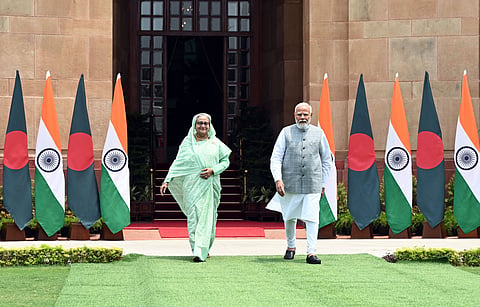New Delhi faces the gravest geopolitical fallout from Sheikh Hasina’s exit
In the hours before Sheikh Hasina fled Gonobhaban, her official residence in Dhaka, on 5 August, Bangladeshi security forces killed scores of protesters who had joined a huge march to the capital demanding an end to her autocratic rule. Around the same time, it has since been reported, Hasina had pressured the army chief to enforce a curfew using deadly force, which would have meant the military joining the bloodbath. The army chief refused.
The prime minister’s desperate hold on power finally slipped when security chiefs warned that the advancing protesters would reach Gonobhaban within an hour and they doubted their ability to contain the crowd. Speculation that India, her strongest international ally, would intervene in her favour proved unfounded, and Hasina was left at the mercy of the military, which ultimately facilitated her escape across the border. She wound up at a safe house in Delhi, trying but failing to gain asylum in the United Kingdom. All told, the weeks of protests against her government, which started on university campuses and escalated in reaction to brutal state repression, left at least five hundred dead, including more than thirty children.

